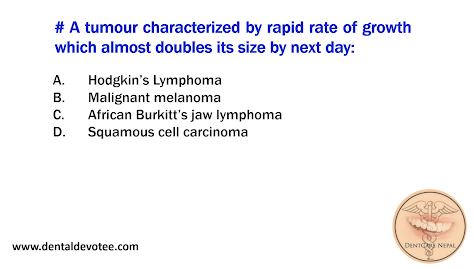Paederus Dermatitis: What You Need to Know About This Painful Insect Reaction
Introduction
Paederus dermatitis, also known as "rove beetle dermatitis" or "Nairobi fly dermatitis," is a painful and often alarming skin condition caused by contact with certain species of rove beetles, particularly those from the Paederus genus. These small insects don’t bite or sting, but their body fluids contain a potent toxin called pederin, which can cause severe skin irritation. I recently experienced this myself, resulting in a large, scary wound that prompted me to raise awareness about this little-known but dreadful insect. This article will explain what Paederus dermatitis is, its symptoms, causes, treatment, and prevention strategies to help you avoid the same discomfort.
 |
| Day 3 Crusting and healing of wound |
 |
| Day 2 After contact with the Acid Fly |
What is Paederus Dermatitis?
Paederus dermatitis is a type of irritant contact dermatitis caused by crushing a Paederus beetle against the skin. These beetles, often mistaken for ants or small flies, are typically 7–10 mm long, with a distinctive appearance featuring black and orange or red markings. They are commonly found in tropical and subtropical regions, including parts of Africa, Asia, South America, and Australia, often in warm, humid environments near agricultural fields or rivers.
Unlike bites or stings, the reaction occurs when the beetle’s hemolymph (body fluid), which contains pederin, comes into contact with the skin. This toxin is highly irritating and can cause painful, burning lesions that may last for days or weeks if not properly managed.
Symptoms of Paederus Dermatitis
The symptoms of Paederus dermatitis typically appear 12–48 hours after contact with the beetle and can vary in severity. Common symptoms include:
- Redness and Burning Sensation: The affected area becomes red and feels intensely warm or burning.
- Blisters and Lesions: Small blisters or pustules form, often progressing to larger, open sores or ulcers.
- Itching and Pain: The lesions are often itchy and painful, making it difficult to ignore.
- Linear Marks: The lesions may appear in streaks or linear patterns, as the beetle is often unknowingly brushed across the skin.
- Secondary Infections: Scratching the affected area can introduce bacteria, leading to infections that worsen the condition.
In my case, I developed a large, red, and painful wound that looked alarming and took weeks to heal fully. The delayed onset of symptoms can make it hard to connect the reaction to the beetle, as many people don’t recall encountering the insect.
Causes and Risk Factors
Paederus beetles are attracted to artificial lights, which often brings them into homes or outdoor areas at night. Crushing the beetle, either intentionally or accidentally (e.g., swatting it or brushing it off the skin), releases pederin, triggering the dermatitis. Key risk factors include:
- Geographic Location: Living in or visiting tropical or subtropical regions where these beetles are prevalent.
- Seasonal Factors: Outbreaks are more common during rainy seasons when beetle populations increase.
- Nighttime Exposure: The beetles are nocturnal and drawn to lights, increasing the risk of contact in the evening.
- Unawareness: Many people, including myself, are unaware of the beetle’s danger and may crush it, worsening the exposure.
Treatment and Management
If you suspect Paederus dermatitis, prompt action can reduce the severity of symptoms. Here’s what to do:
- Wash the Area Immediately: If you believe you’ve come into contact with a beetle, wash the affected area with soap and water to remove any residual pederin. This can help minimize the reaction if done quickly.
- Avoid Scratching: Scratching can worsen the lesions and lead to secondary infections.
- Apply Cold Compresses: A cold compress can reduce burning and inflammation.
- Use Topical Treatments: Over-the-counter hydrocortisone cream or antihistamines can help with itching and inflammation. For severe cases, consult a doctor for stronger topical or oral steroids.
- Monitor for Infection: If the wound shows signs of infection (e.g., increased redness, swelling, or pus), seek medical attention. Antibiotics may be needed.
- Keep the Area Clean and Dry: Proper hygiene can prevent complications and promote healing.
In my experience, washing the area and using a mild corticosteroid cream helped, but the wound still took time to heal. Consulting a healthcare professional early can make a significant difference.
Prevention Tips
Preventing Paederus dermatitis requires awareness and caution, especially in areas where these beetles are common. Here are some practical tips:
- Avoid Crushing Beetles: If you see a small black-and-orange insect, gently brush it off or blow it away rather than crushing it.
- Use Insect Screens: Install fine mesh screens on windows and doors to keep beetles out, especially at night.
- Limit Light Exposure: Turn off unnecessary outdoor lights or use yellow bulbs, which are less attractive to beetles.
- Wear Protective Clothing: Long sleeves and pants can reduce skin exposure when outdoors in beetle-prone areas.
- Check Bedding and Clothing: Shake out clothes, towels, or bedding before use, as beetles may hide in fabrics.
- Stay Informed: Learn to recognize Paederus beetles and their habitats, especially if you live in or travel to affected regions.
Conclusion
Paederus dermatitis is a painful and distressing condition that can catch anyone off guard, as it did me when I developed a large, alarming wound after unknowingly crushing a rove beetle. By understanding the causes, symptoms, and prevention strategies, you can protect yourself and your loved ones from this dreadful insect. If you suspect contact with a Paederus beetle, act quickly to minimize the reaction and seek medical advice if symptoms worsen. Awareness is key—stay vigilant, especially in warm, humid environments, and share this knowledge to help others avoid the same ordeal.









